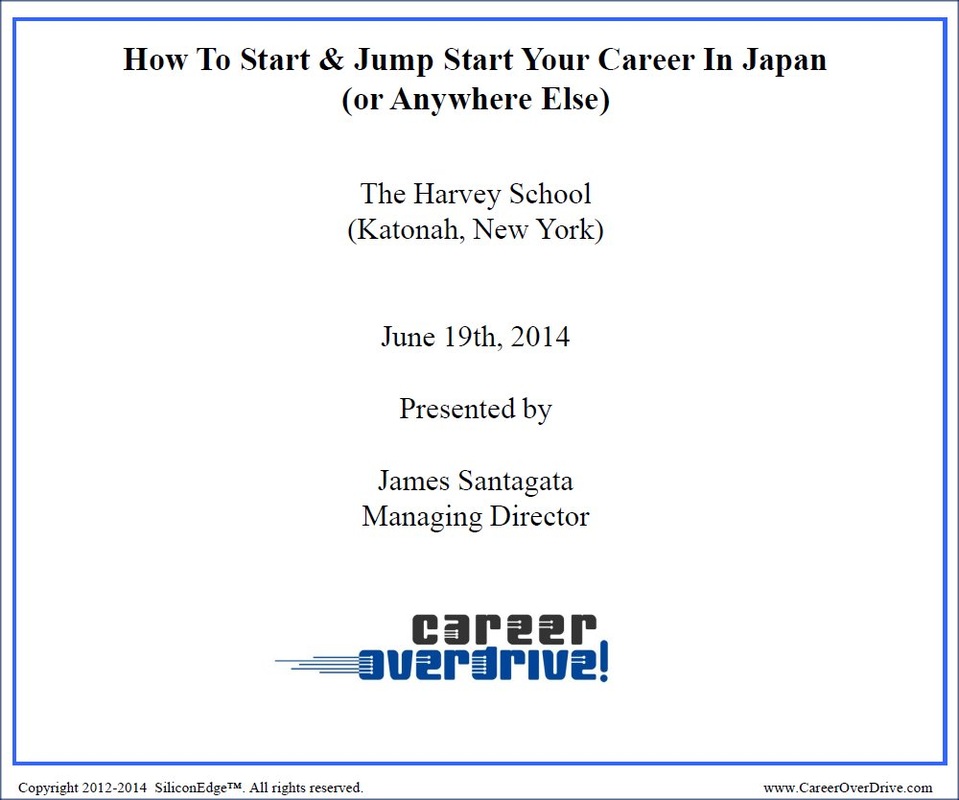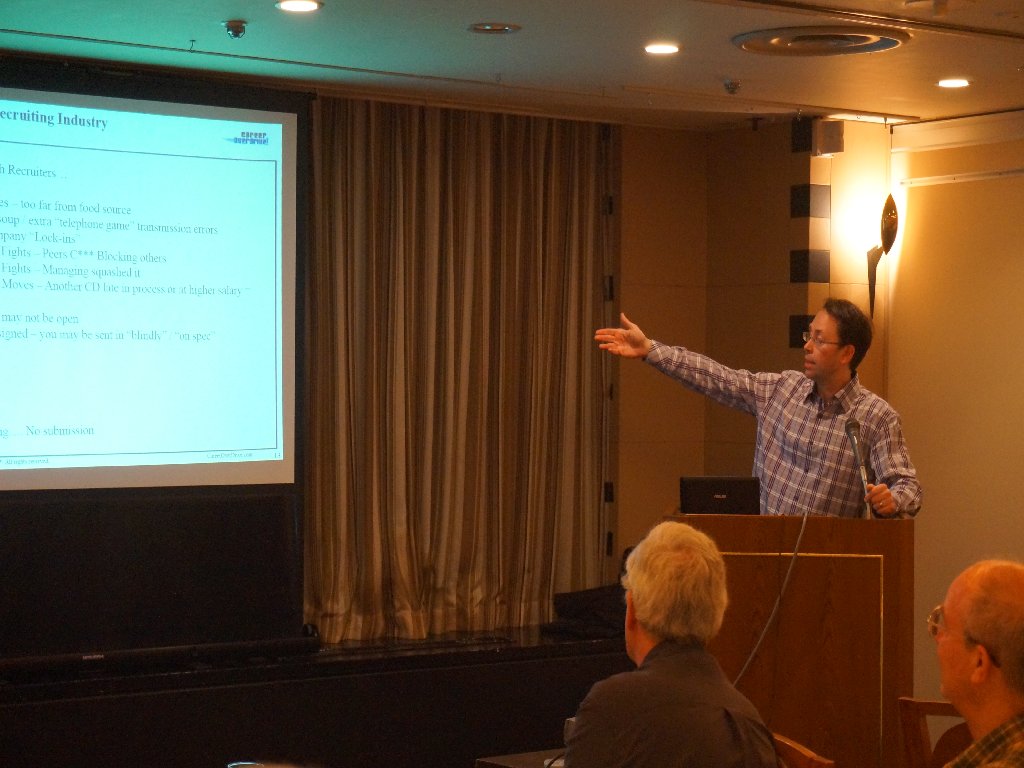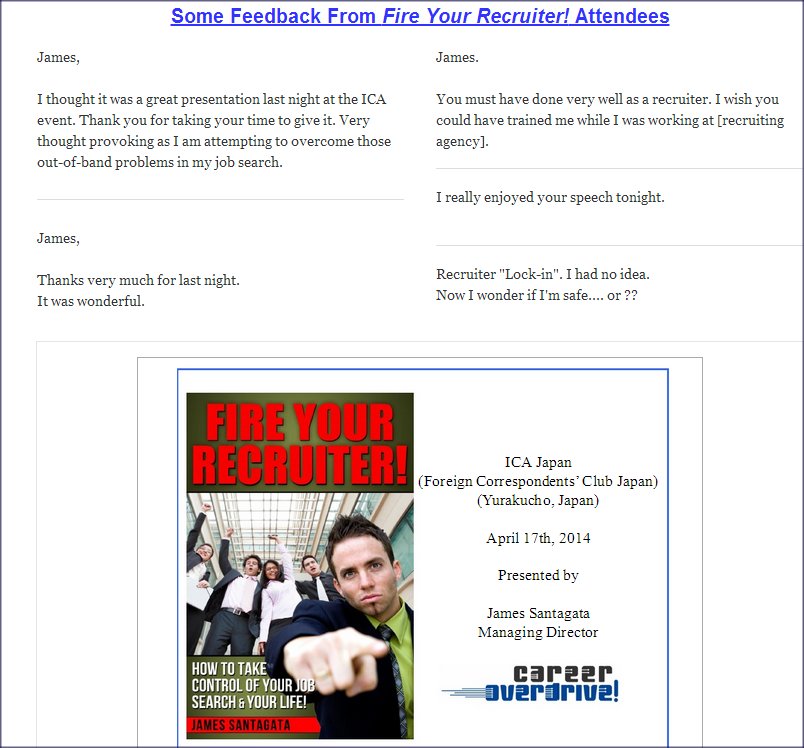|
A great deal has been written and said about the difficulties companies face in finding, attracting and acquiring top talent. And yet even when companies are able to accomplish that they still often find themselves overpaying for this talent in terms of both the compensation package extended and the time and effort expended to find and close the desired candidate. And if that isn't reason enough to rethink the entire talent acquisition process we must be honest and acknowledge that the entire process also often takes far, far too long which introduces a number of possibly very expensive opportunity costs along the way. So why does this happen? Well, for starters, while we've all heard so much about the so-called War For Talent and how important top talent (supposedly) is to the bottom line success of a firm or organization, the reality is that many, if not most companies, and their employees (often unbeknownst to themselves) are actively engaged not on a War For Talent but instead are engaged in a defacto War On Talent. That bears repeating: A War On Talent. Not a War For Talent. A minor change in preposition yields a huge difference in meaning. They are actively, and quite successfully I might add, chasing away the very top talent that they so desperately need and desire (or are at least stating that they need and desire). In some cases they are chasing away the top talent from even applying -- "Why would I apply there? It's a resume blackhole"....."Why would I apply there? Who wants to go through a maze of interviews only to get knocked out by one interviewer who doesn't like you or is afraid of your talent?". In other cases, they are chasing away the talent from continuing on in the process after the first interview -- the company or hiring authority wants to move the candidate forward in the process but the candidate opts out and pulls the rip cord. In still other cases, we find that they're extremely effective in filtering out the top talent during the initial resume screening process -- that's right, extremely effective in cutting out, in booting to the curb, the top talent during the resume review or screening process. And as if that isn't enough, in other cases, they're simply drop kicking the best candidates to the curb after the first or second interview. How fast this occurs most often depends on how soon it becomes evident to the hiring company, manager or future peers that the talent at hand is hot (the more talent a candidate has, the more often and faster this can happen -- yes it's counter intuitive but it's a reality). "James, James, what are you blabbering on about? What do you mean companies are blocking and booting top talent to the curb? Why would they do that? And for the top talent they hire how can you possibly say that they are overpaying?" You asked, so let's take a quick look at these. First, it's no secret that companies often spend large sums of money trying to recruit and acquire what they consider to be the top talent on the market and in the market. It would behoove us to remember that the total cost to successfully hire one candidate accrues not only from the direct expenses paid to advertise the open position but that it also comes from the often steep fees (steep from the perspective of the hiring company -- I've never heard a hiring firm say that a recruiting agency's / third-party agency's fees were "too low".) which third-party (agency) recruiters charge. These fees may be as low as 15% to 20% of the new hire's first year salary in many places such as in the US but the fees may also range to as much as 30% to 35% in places such as Japan (in some cases, accelerating up to 50% -- yes, 50% -- this is not a typo). But even fees of 15% to 20% can be painful - this is especially the case when annual salaries are running at $100,000. $120,000 or $150,000 or even much more. One must also determine the volume of positions to be filled -- not just for new positions but for existing positions (dictated by the churn rate or conversely the retention rate). It doesn't take a financial genius to realize that these expenses can and do add up rather quickly. We also must consider how much time and energy is spent bringing in each of these candidates for an interview. And by the way, if you aren't paying fees to a third party agency then you are most likely relying on your in-house recruiters so again you must fully burden their compensation packages and costs -- salary, bonuses, health care, expenses, HR management / compliance fees, payroll taxes and processing and facilities - desk, telephone, computer, etc.). We also need to consider the time and energy spent by the HR department as well as the hiring manager. We must also include the costs associated with the participation of the interviewee's future peers who often asked to assist or are required to participate in the (again, often very lengthy) interview process. We should have no illusions that the very act of Interviewing external candidates can quickly chew up a huge amount of an employee's valuable time and also reduce their productivity due to the increased stress they experience from the distractions that participating in so many candidate interviews brings to each of the interviewer's already hectic and fully-packed work schedule. This is not to say that interviewing is not an important part of a hiring manager's or even a team member's job. The fact is, participating in these interviews is not just important but critical. For the company. For the department. For the team members. But it does mean that we must take into account all the costs (and who pays them) associated not just with the recruiting or talent acquisition process but more specifically with the talent acquisition process we have chosen or that we have been "gifted". Beyond this, it also means that the candidates who are brought in for an interview should be (properly and effectively) screened to ensure that each is of sufficient constitution to be "employable" at the firm. Further, all participating interviewers must know how to define talent and test for fit both within the broader company and within their particular department as well as the particular team they would join if successful. Going even beyond this, we find that the all interviewers must know how to effect the aforementioned items. For instance, all interviews must know what techniques to use to extract the required information as well as guide the interview and they must be able to use them competently if not fluently. They must also know what questions to ask and how to ask them, and most importantly, how to interpret the interviewee's responses to these questions. Interviewers seldom think about this and even if they do their definition of talent is most often found to be both suspect and even deficient as is their ability to effectively and efficiently interview and assess the candidate at hand on an absolute basis as well as relative to the available talent on the market (and at their price range). In practice, this leads to a hiring process which favors either the selection of a patently "wrong" candidate or the selection of a subpar candidate. It also often leads to the hiring of Safe Candidates or in the case of the hiring which is done by marquee companies (think Microsoft, Oracle, Facebook, SFDC, etc.), it means hiring or leads to hiring only properly pedigreed candidate. And here's a news flash. Almost anytime you hire the properly pedigreed candidate you: (1) Overpay for the talent. (2) You end up with higher candidate expectations which often lead to less loyalty, faster job changes and/or an attitude problem. (3) You end up with an employee who is likely to be recruited away / more receptive to sweet whispers or more likely to look outside. But are companies, especially companies in say, Silicon Valley, actually worried about compensation packages being too expensive, too high? Are they really worried about overpaying? Can't they just slough that off and "expense it"? Well, in regards to the overpayment or overcompensation of talent, we only need be aware of the proven collusion to hold down wages in Silicon Valley through the enforcement of illegal anti-poaching agreements among some the top firms (e.g., Apple, Google, etc. although to Facebook's credit, they apparently declined to participate). If hiring companies weren't concerned about fast rising wages and the total costs of finding new key talent or replacing it, why would they take such great risks through the involvement in such collusion? What's the upside of the collusion if everything is kosher as is? This further begs the question: Why, why would they do this? And why would wages be rising so much and so fast? Yet again, Economics 101 to the rescue. We need only look at, as a starting point, supply and demand. The hiring firms most likely felt that the supply of the top talent they desired or required was in short supply compared to their own hiring demands/needs as well as the aggregate market demand. To be clear, this is top talent which is defined as top talent per their often narrow and erroneous definition(s). Now it is also highly possible that the true top talent is and was in short supply although this doesn't justify illegal arrangements. However, it is even more probable, based on what I've seen in my own HR Consulting and Executive Coaching over the years, that this was brought on by the firm's HR department's or the firm's hiring managers' own broken definition of what talent is (let alone what top talent is) as well as the inability of the hiring firm and/or the hiring firm's interviewers to properly attract, assess and close down said talent. What is needed is to develop a cohesive framework starting with the definition of what the desired or required talent looks like as well as the techniques, processes and questions needed to identify, assess, attract and close it. This rarely happens. Instead we often find that firms' hiring efforts are impeded by a multitude of cognitive biases such as the educational pedigree or the status and ranking of the candidate's current or former employer and so on (halo effect, horns effect, social proof, the safe candidate, just world hypothesis, etc.). Yet as we've discussed time and time again, the firm's operating or assumed definition of desired or required talent is almost always wrong and these mental short cuts further invoke a series of destructive cognitive biases which rapidly compound and become a vicious circle. For instance, when you see a "talented" Google sales person can you really accurately determine how much of that person's success at sales at Google is or was due to their own talent? How much of their success was due to the team behind them? How much of their success was due to the resources they had access to? How much of the candidate's success was due to Google's market power which is almost a monopoly power? How much of the candidate's success was due to the Google brand?  In terms of the salaries paid, higher salary doesn't automatically buy better talent nor more loyal talent. Yet the myth and meme that it does still persists. We've already seen numerous cases of extremely loyal talent, often top talent which is motivated far less by market-rate or above-market rate salaries and motivated far more by other factors. Examples of occupations or roles where the compensation may be well below the market rate include military pilots and other military or intelligence community specialists as well as the clergy and various medical volunteers working in dangerous places around the world. Turning to other more extreme or unsavory cases of motivation by non-monetary means, we immediately note members of cults and suicide bombers. These are often extremely motivated and loyal individuals who, in the case of cults, are often willing to not just work for FREE but to first donate to the organization their entire life savings. In the case of suicide bombers, well, they are willing to blow themselves up. Talk about dedication and passion, however twisted, debased or unsavory one may find it. So don't try to tell me money is the greatest motivator. It isn't. Now since you most certainly aren't going ask the successful candidate to commit to such a radical program as giving you all their assets and working for free or blowing themselves up when they join your company but will most likely pay going to pay them at least a "decent" if not competitive salary, we need to ask again: "How hard can it really be to close the candidate down and get them to join your company?" If you can't answer that satisfactorily then it's time to look at adjusting or reconsidering your recruiting / talent acquisition process. And for those not interested in re-inventing the wheel or who would like to access an immediately actionable system that provides an extremely powerful framework and system to identify, attract, assess and close top talent all while not overpaying or chasing the desired talent away we'd suggested our Supercharged Candidate Interviewing training and consulting program as well as our High-Performance Talent Acquisition training and consult program. Something to think about.
0 Comments
This presentation, How to Jumpstart Your Career In Japan, was delivered to a large group of visiting high school students from The Harvey School (Katonah, New York).
In the presentation we covered:
By James Santagata
Principal Consultant, SiliconEdge Many companies mistakenly think that they're fighting a "War For Talent" when their policies and procedures inadvertently have them waging a "War On Talent". The "War On Talent" takes the form of overpaying for weak or misaligned talent while rejecting and filtering out solid performers and top talent. It 's often the result when firm is mired in destructive processes and practices such as Cargo Cult Recruiting™, Cargo Cult Interviewing™ & Cargo Cult Hiring™. Companies that are concerned about this should investigate auditing, deconstructing or tearing down and replacing their current practices and processes as needed. SiliconEdge's Supercharged Interviewing™ and TrueHire™ Methodology was developed for just this purpose. Use these programmes to confidently hire better candidates faster and cheaper while setting the stage for strong future employee engagement from the very first interview. Why Companies Overpay for Tepid & Terrible Talent While Blocking, Rejecting & Trampling Top Talent5/13/2014 By James Santagata
Principal Consultant, SiliconEdge Have you ever wondered why companies so often overpay for talent that just doesn't perform or worse negatively impacts the company's performance? By the same token, have you ever wondered why companies seem to so often inadvertently or even consciously block, reject and trample Top Talent? The fact is, the so-called War For Talent most often resembles a War On Talent. By James Santagata
Principal Consultant, SiliconEdge Select, develop, deploy & manage your people right & you can have the advantages of a high-tech economic center right at home. Simply hearing the words Silicon Valley can evoke an image of cutting-edge innovation advanced by an army of daring, if not slightly mad, entrepreneurs who feverishly seek to develop the world’s next technological marvels. But what exactly makes Silicon Valley so successful and, more importantly, can it be replicated? China has Zhong Guan Cun, India has Bangalore. Where is Japan's “Silicon Valley”? Japan, the third largest economy in the world, still lacks any type of large, formal tech epicenter like the one in California. Does this even matter for business success in the 21st century? Many people, including Silicon Valley industry insiders, will immediately and perhaps misguidedly say yes. A more reasoned and introspective analysis, however, demonstrates that this type of success is not about location but more importantly about talent. And even more specifically: it is not just about talent, but about how that talent is selected, developed, deployed and managed. To create a Silicon Valley atmosphere, a company needs employees who possess these three skills: 1. Business acumen to identify huge opportunities; 2. Leadership to seize those opportunities; and 3. The ability to select, develop, deploy and manage talent to quickly exploit these opportunities. Once we understand this, what then are the core skills that we should be focusing on when developing talent that can rise to and perform at the level of Silicon Valley’s? If we look closely, it’s clear that this boils down to five core skills, all of which can be readily developed in our existing employees: 1. Leadership: The ability to take risks, to develop a vision and to lead others to the successful path. This is not just for senior leaders, but for all key players so that they can learn how to lead across all levels: from senior management to their peers or to those below them. And it includes the ability to reframe what are commonly perceived as failures as mistakes and missteps with important lessons to learn. Steve Jobs had success in a variety of diverse areas and products, from the iMac, iPod, iPhone, iTunes and Pixar. This wasn’t accidental nor was it surprising, as each of these areas was ripe for a true leader to identify and then pluck the low hanging, yet massive fruit. His move into iTunes alone was pure leadership as he had to overcome the lawsuit Apple had lost to the Beatles record label prohibiting engagement in music-related businesses. His success with iPod was further made possible by Sony’s reluctance to move its Walkman franchise forward into developing solid state devices including technologies such as microprocessor chip, crystalline semiconductors and RAM. 2. Communication: The ability to clearly communicate through a variety of media ranging from one-on-one and group meetings to formal reports and presentations to business emails and video conferences. Very often, the best ideas as well as the pulse of the market comes from those closest to the customer – support engineers, sales and customer service. And yet, most often this information does not get captured and clearly communicated back to product managers and the executive staff (see also Ogushi Matrix Communication lines). 3. Influence & Persuasion: The ability to get others to want to support a project or, if they won’t actively support it, to at least make sure that they don’t actively resist it. Previously we mentioned the need to capture and clearly communicate opportunities and obstacles a company may face or is facing. Yet, there are plenty of instances where even a clearly communicated issue or opportunity falls on deaf ears, such as Kodak’s need to move from film-based to digital cameras. There are many reasons for resisting opportunities or ignoring warnings about obstacles, including that this information or proposed shift in business may benefit the company but specifically expose or harm one person’s or department’s operations, ego, status or bonuses. For this reason, clear communication is only a starting point. Beyond this, influence and persuasion must be utilized as well. 4. Negotiation: The ability to negotiate not only externally but, often more importantly, internally. This is critical during situations such as when a green light is needed for a feasibility study, to request funds and resources for product development or to get approval and buy in for the launch of a product that will potentially cannibalize an existing cash cow product. Influence and persuasion can only take us so far, and at some point it can be expected that we will need to negotiate. This requires the ability to craft a win-win solution as well as to ensure that the other party sees it that way. It is not only possible but extremely common for a win-win to be misperceived and subsequently blocked, simply because the other person has become psychologically opposed resulting in a classic “cut your nose off to spite your face” scenario. In these scenarios everyone loses including employees, managers, shareholders and customers. 5. Assertiveness: The ability and confidence to speak up and share opinions or ideas or to challenge another’s opinions or ideas in a professionally affirmative manner. Assertiveness (often confused with aggressiveness) is a critical skill that is especially important for those who may have key insights and knowledge, such as engineers or service people, but not the personality or interest in speaking out nor the title or standing within the company. Instilling this skill in a firm’s employees can unleash great productivity and opportunity while also identifying problems or obstacles before they become dangerous or expensive. By developing these 5 core skills sets and Valley Values in your existing talent you will ensure that your employees’ inherent creativity and innovative nature do not go to waste and that the people with these ideas have the tools and skills needed to bring this forth to their peers and superiors and ultimately to the market place. By James Santagata Principal Consultant, Silicon Edge In a recent blog post entitled "How to Deal with Pure Recruiting Mistakes", Mark Suster, a partner at Upfront Ventures gives his take on fixing recruiting or hiring mistakes. He has written some other posts on the subject as well in terms of hiring and firing fast. In regards to hiring and firing fast, I want to be clear and fair that his post is primarily referring to startups (whose needs may be well different than a large, more established company) and is not a "just pull anyone in and see who makes it" mentality. There is a lot of merit in moving quickly in the hiring process, in fact, many companies lose key talent because they move to slow. This slowness in hiring often comes from several factors which may include an overly subjective interview process, the inability to get all people to agree to a hire (e.g,. a group decision) or "cock-blocking" office politics. What I want to do today, is to delve a little deeper into why recruiting mistakes happen. Why are people hired who don't work out? Is it skills, attitude, cultural fit or some other factor or combination? There are many factors and they come from both sides of the table -- the candidate's side and the hiring firm's side. Each situation is different (ESID), but we can usually boil it down to several factors: 1. The candidate doesn't have the aptitude (skills). 2. The candidate doesn't have the attitude (mind set and motivation). 3. The candidate doesn't mesh / can't find his or her way in the corporate culture. That is, it moves too fast or too slow for the candidate. 4, The company improperly assessed the candidates skills sets and fit. 5. The company selected the candidate to fail (e.g,. "Rank & Yank" and this candidate is the group's Sacrificial Lamb). 6. The company applied a selection shortcut -- "Oh he worked at XYZ company, must be good..." 7. The candidate's new peers or one peer sees the new hire as threat and works to remove (have fired) him or her. Of these factors, #6 is perhaps the most critical error (along with #4) when we make hiring decisions quickly. What happens is that unless we know exactly how to interview AND are interested in a very objective, brass-tacks assessment of how the candidate really is rather than how we'd wish would be or hope the candidate is, we will get fooled and made bad decisions. Most often this happens when we rely on Social Proof, assume the Portability of Talent (namely, the inability to identify and separate the success of the candidate from the success or support provided by the system, company or brand) and engage in Trait Ascription Bias while applying the Just World Hypothesis (sometimes known as Just World Theory, Fallacy or Phenomenon. It's a cognitive bias). Two of the more insidious reasons the wrong hires occur is when the hiring authority's (or future peer group's) ego as well as internal politics are injected into the hiring and assessment process. This is a killer. Often resulting in hiring the wrong talent, while driving away and 86'ing the key talent. Here's a quickly illustration of several of these factors at play simultaneously. And just for the record, please don't read anything into the universities or companies that I have chosen to illustrate this with. They were simply chosen because of their impact in terms of having or lacking social proof and so on. Mishire Example: Hiring Manager / Hiring Authority: "Hey, this candidate is a stud/studette. He/she was the Sales Director at Google so he'd/she'd make the perfect first hire for our startup sales team." Mishire Analysis: When you're selling for Google or IBM among other well-known firms, you'll find that about 90% of the sales mojo comes from your brand, team and resources. Conversely, when you're selling from Puntster Analytics from Podunk. Iowa, it's all about your game and skills -- pure talent. Similar mishires are also clearly seen when hiring shortcuts are taken by hiring from direct competitors (or hiring industry insiders) and misattributing their past successes to the candidate rather than seeing what the system provided. Conversely, an excellent person may be turned away and they often are, because their stats aren't as good BUT their stats are the result of Jedi-level talent in the face of a poor brand or system. Yet they are rejected. There are countless other examples, but another common one is the filtering out or rejecting of highly-qualified talent because the current interviewers or team see the candidate as a clear and present danger and threat to someone's salary, position, title and/or ego on the team. How to Deal with Pure Recruiting Mistakes
Posted on November 27, 2013 by Mark Suster One of the unavoidable realities of building a startup is having to fire people. In a normal business you can often sweep bad performers under the rug and not deal with them. When you have millions or billions of dollars of revenue you can suffer a few bad performers or bad apples. You can miss a quarter’s target and not cull the inefficiencies. I’m not saying you should, but you could. But in startups this equals death. Death because just 3 extra non-performing employees in a company of 15 can either accelerate cash out date or can dramatically lower your productivity. I’ve spoken about this before and my mantra, “Hire Fast, Fire Fast.” When I first started my career I came across a term for this that has always stuck in my head and serves as a useful reminder of this mantra. We called it “PURE.” Previously. Undetected. Recruiting. Error. We're in the process of migrating content from our old CMS system.
|
AboutSiliconEdge™ helps catalyze and drive the Productivity, Performance, Profitability, and Peace of Mind (4P's) of organizations, talent, and teams through our innovative, results-driven Talent Acceleration, Optimization, and Transformation programs. Archives (by date)
May 2022
Categories
All
|
- Overview
- Psyche OS
- Psyche Suite
- Coaching
- HR Solutions
-
Media
-
Events
- Career Coaching @ AfterJET 2015
- I am 40 Now! Is It Really Game Over For Me In Japan's Job Market? (FCCJ)
- How To Jump-Start Your Career In Japan Or Anywhere Else
- Fire Your Recruiter & Take Control of Your Career & Your Life! (FCCJ)
- After JET Conference 2014
- Japan HR Society (JHRS) Annual Symposium
- Pinterest, Box, Splunk, Millennial Media (Mitsubishi Estate's EGG/Tokyo 21C)
- Tokyo 2.0 - Cloud Computing
- 2nd Annual Internet Marketing Association Conference (IMA)
- Internet Marketing Association's Summit (IMA)
- Successful E-Marketing Initiatives (Southern California BMA)
- About
- 日本語







 RSS Feed
RSS Feed

